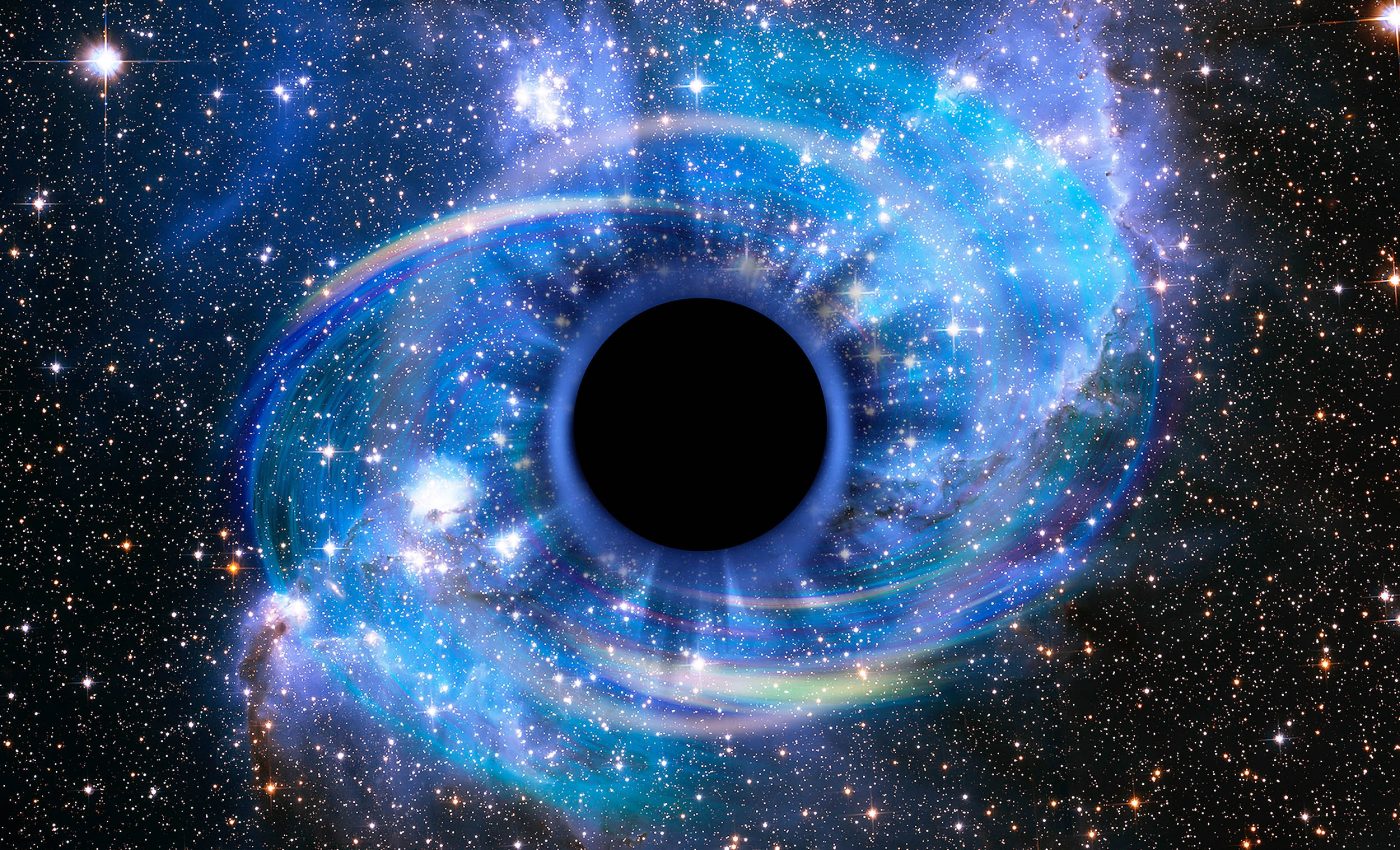
Solving the singularity puzzle at the heart of black holes has proven very difficult
“Hic sunt leones,” said Stefano Liberati, the co-author of a new study exploring the nature of the singularities at the heart of black holes.
On medieval charts, these words warned of terra incognita, or unknown territory. In modern cosmology, they mark the central core of a classical black hole – a place where Einstein’s otherwise triumphant field equations predict an impossible infinity.
According to Karl Schwarzschild’s 1916 solution to Einstein’s theory of general relativity, if enough mass collapses into a small region, it forms a horizon through which nothing can escape. Spacetime curvature keeps steepening until, at the very center, it diverges.
By the 1960s, theorists had proven that singularity is not a removable coordinate glitch but an unavoidable feature of classical relativity taken to its limit.
Immensely compact objects
Invoking the word “singularity” became, in Liberati’s phrase, a white flag that signals surrender: here our current physics breaks down. Observations since the 1970s have nevertheless confirmed that immensely compact objects exist.
Nobel‑winning milestones include the first gravitational‑wave signal in 2015 – an invisible quake caused by two black holes spiraling together – and the Event Horizon Telescope’s images of the shadows of M87* and Sagittarius A*.
These achievements reveal matter and light teetering on the brink of the horizon, but they say nothing about what happens farther in.
A new look at black holes
Seeking an answer to these questions, the Institute for Fundamental Physics of the Universe (IFPU) gathered an eclectic mix of theorists and observational specialists for a workshop whose debates have just been distilled into a substantial new paper.
Liberati, an astrophysicist at IFPU, calls the result “something more” than a conventional review: the text weaves together arguments from participants who began with sharply different positions and, in several cases, left with revised views.
Three core models emerge
By the closing session, three broad classes of models had emerged. Each described an ultra‑compact object with different interior properties, while reproducing the observed exterior gravity that makes a black hole so distinctive.
The classical black hole remains faithful to Einstein, retaining both its event horizon and its singularity. The regular black hole keeps the horizon intact yet replaces the infinite core with a finite quantum‑driven region.
Objects that mimick black holes
Finally, the black hole mimicker does away with horizon and singularity alike. Objects in this family – gravastars supported by quantum vacuum energy, boson stars made of exotic scalar fields, or wormholes stabilized by modified gravity – imitate the outer profile of a black hole.
However, they host a radically different interior. Participants then asked whether nature could forge such objects.
Collapse halted by quantum pressure might generate a regular black hole, whereas a cloud of self‑interacting bosons could condense into a mimicker without ever forming a horizon.
Some scenarios even allow an object to migrate from one class to another as it accretes mass or sheds angular momentum.
Probing the invisible
While current telescopes cannot see inside a horizon, the team emphasizes that non‑classical objects are never exactly identical to a Schwarzschild solution even outside that boundary. Small discrepancies could betray a different interior.
High‑resolution imaging may reveal extra photon rings or subtle asymmetries around a mimicker, produced by the way light bends in a spacetime that slightly deviates from Einstein’s geometry.

Future gravitational‑wave detectors could pick up minute echoes caused by reflections from a surface just outside where the horizon would usually form. Even thermal signatures from a surface that replaces the horizon might betray a mimicker.
Confirming the singularity of black holes
Why press so hard to replace or confirm the idea of singularity in black holes? Aside from resolving a long‑standing paradox in general relativity, experimental evidence for a finite core or a mimicker could illuminate quantum gravity, the still‑missing framework uniting relativity with quantum mechanics.
If singularities are smoothed away, the mechanism doing the smoothing must involve quantum principles acting on astronomical scales. For now, no one can specify how strong the telltale deviations should be.
Numerical simulations are advancing rapidly, however, helped by ever‑faster supercomputers and clever algorithms.
The future of gravity research
As models sharpen, engineers can design instruments keyed to the predicted anomalies, just as waveform catalogs guided LIGO’s discovery of gravitational waves. Data will then feed back into theory, pruning ideas that fail and refining those that survive.
Liberati sees the moment as a turning point. “What lies ahead for gravity research is a truly exciting time. We are entering an era where a vast and unexplored landscape is opening up before us.”
Whether the singular black hole core will dissolve into quantum foam, reveal a tangible surface, or stand unchanged as Einstein foretold, the coming interplay of theory, simulation, and observation promises to redraw our deepest map of space, time, and matter.
The study is published in the Journal of Cosmology and Astroparticle Physics.
—–
Like what you read? Subscribe to our newsletter for engaging articles, exclusive content, and the latest updates.
Check us out on EarthSnap, a free app brought to you by Eric Ralls and Earth.com.
—–













